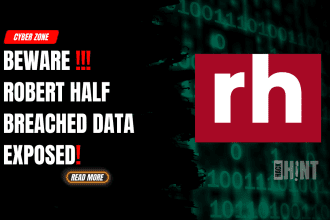This week in cybersecurity witnessed unprecedented chaos as threat actors unleashed their most sophisticated attacks yet. From Chrome’s sixth zero-day vulnerability of 2025 to a record-shattering DDoS attack that peaked at 22.2 terabits per second, September 22-28, 2025, marked a turning point in the cyber threat landscape. Healthcare systems faced devastating breaches affecting millions of patients, while law enforcement scored major victories against the notorious Scattered Spider group. This comprehensive analysis breaks down every critical development from this week in cybersecurity.
🔥 Major Security Incidents
Record-Breaking 22.2 Tbps DDoS Attack Rocks Internet Infrastructure
This week in cybersecurity began with shocking news of the largest DDoS attack ever recorded, reaching an unprecedented 22.2 terabits per second. This massive assault completely redefined the scale of cyber warfare and raised serious questions about internet infrastructure resilience.
Attack Impact:
- Scale: 22.2 Tbps peak traffic volume – shattering all previous records
- Infrastructure Threat: Pushed conventional defense strategies beyond their limits
- Global Concern: Demonstrated exponential growth in threat actor capabilities
- Future Implications: Traditional mitigation methods may become obsolete
CISA Issues Emergency Directive for Cisco Zero-Days
The week in cybersecurity escalated when CISA issued only its second emergency directive under the current administration, Emergency Directive ED 25-03, after discovering that advanced threat actors had compromised multiple federal agencies using previously unknown Cisco vulnerabilities.
Critical Details:
- CVE-2025-20333: CVSS 9.9 – Remote code execution with root privileges
- CVE-2025-20362: CVSS 6.5 – Authentication bypass vulnerability
- Persistence Method: ROM manipulation surviving reboots and firmware upgrades
- Federal Impact: At least 10 organizations worldwide compromised
- Response Timeline: 48-hour patch deployment requirement
Jaguar Land Rover Production Shutdown Extends
The automotive giant’s cyberattack continued dominating headlines as production remained halted until October 1, 2025:
- Global Impact: UK factories and international operations affected
- Financial Loss: Estimated £50+ million weekly
- Workforce: 39,000 employees impacted globally
- Recovery Effort: Collaboration with UK NCSC and external cybersecurity experts
🚨 Critical Vulnerabilities Exploited
Chrome’s Sixth Zero-Day of 2025 Actively Exploited
Google released emergency patches for CVE-2025-10585, marking the sixth actively exploited Chrome zero-day this year – an alarming trend that shows no signs of slowing.
Technical Details:
- Location: V8 JavaScript and WebAssembly engine
- Type: Type confusion vulnerability
- CVSS Score: 8.8 (High severity)
- Exploitation: Active attacks targeting cryptocurrency wallets and espionage
- Attack Method: TurboFan JIT compiler manipulation
- Patch: Chrome version 140.0.7339.185 or later required
Additional Chrome Vulnerabilities:
- CVE-2025-10890: Side-channel information leakage
- CVE-2025-10891/10892: Integer overflow issues in V8 engine
- Impact: Sensitive data exposure and system instability
- Fix: Chrome version 140.0.7339.207/.208
SolarWinds Critical RCE Flaw Discovered
CVE-2025-26399 emerged as a critical vulnerability in SolarWinds Web Help Desk:
- CVSS Score: 9.8 (Critical)
- Attack Vector: Unauthenticated remote code execution
- Root Cause: Deserialization of untrusted data
- Significance: Patch bypass for two previous vulnerabilities
- Urgency: Immediate hotfix application required for version 12.8.7
Legacy Hikvision Cameras Under Attack Again
An eight-year-old backdoor vulnerability in Hikvision security cameras is being actively exploited:
- CVE-2017-7921: CVSS 10.0 (Maximum severity)
- Impact: Complete authentication bypass, video feed access, credential theft
- Method: Simple crafted URL exploitation
- Risk: Millions of unpatched legacy devices vulnerable worldwide
👮♂️ Law Enforcement Victories
Scattered Spider Leaders Arrested in Coordinated Operation
This week in cybersecurity delivered major law enforcement victories with the arrest of key Scattered Spider cybercriminal group members in a coordinated international operation.
UK Arrests:
- Thalha Jubair (19): Aka EarthtoStar, Brad, Austin, @autistic – East London
- Owen Flowers (18): Walsall, West Midlands
- Connection: August 2024 Transport for London cyberattack
US Federal Charges Against Jubair:
- 120+ network intrusions across multiple organizations
- 47 U.S. entities extorted between May 2022-September 2025
- $115 million in ransom payments collected from victims
- Charges: Computer fraud, wire fraud, and money laundering conspiracies
Las Vegas Casino Connection:
- Teenage suspect surrendered for 2023 casino attacks
- Charges: Identity theft, extortion, computer crimes
- Timeline: August-October 2023 multiple property attacks
Major Cryptocurrency Enforcement Actions
Canada Shuts Down TradeOgre Exchange:
- First Canadian crypto platform takedown by RCMP
- $40 million seized from criminal activities
- Violation: Unregistered money services business with FINTRAC
- Impact: Platform offline since July 2025
Israel Targets Iranian Crypto Wallets:
- 187 cryptocurrency wallets ordered seized
- $1.5 billion in USDT collectively received
- Allegation: Islamic Revolutionary Guard Corps terror financing
- Complexity: Blockchain analysis challenges direct attribution
Cybercrime Group “Retirement” Claims
15 major cybercrime groups including Scattered Spider, ShinyHunters, and LAPSUS$ announced “retirement” on BreachForums, claiming they achieved their goal of “exposing digital infrastructure weaknesses.” Security experts remain skeptical, noting similar announcements often precede rebranding efforts.
🏥 Healthcare Under Attack
Devastating Breach Statistics Continue
This week in cybersecurity revealed alarming healthcare sector statistics, with August 2025 alone witnessing 55 separate breach incidents affecting over 3.58 million patients.
Critical Healthcare Metrics:
- Average breach cost: $7.42 million per incident in the United States
- Primary attack vector: Network servers compromised in 67.3% of incidents
- Attack method dominance: 87.3% from hacking/IT incidents
- Third-party risk: 20% involved business associate compromises
DaVita’s Massive Patient Data Breach
The Interlock ransomware group caused devastating impact at DaVita Inc.:
- Victims: 2.69 million patients (75% of August’s total healthcare victims)
- Access duration: 19 days of system compromise
- Data stolen: Names, SSNs, health insurance, dialysis results, financial information
- Method: Advanced ransomware with extended persistence
Yale New Haven Health System – Largest 2025 Breach
- Scale: 5.56 million individuals affected (largest healthcare breach of 2025)
- Discovery: March 2025 network intrusion
- Data compromised: Names, birthdates, SSNs, medical record numbers
- Protection: Electronic medical records and patient care unaffected
⛓️ Supply Chain Compromises
Self-Replicating npm Worm Attacks Ecosystem
This week in cybersecurity witnessed the first large-scale worm attack on the JavaScript ecosystem, with a self-replicating malware compromising the npm registry.
Shai-Hulud Worm Details:
- Scale: Over 500 npm packages compromised automatically
- Method: Self-propagation using harvested developer credentials
- Tool: TruffleHog credential scanner for secret extraction
- Platforms: Windows and Linux systems targeted
- Innovation: No human intervention required for spread
Malicious Package Discoveries
“yahoofinance-api” npm Compromise:
- Impersonation: Legitimate financial data library
- Active duration: Over one month before removal
- Method: Obfuscated PowerShell script deployment
- Targets: Chrome, Edge, Brave browser credential theft
- Supply chain risk: Open-source ecosystem vulnerability
PyPI Security Response
Following the GhostAction supply chain attack:
- Action taken: All stolen PyPI tokens invalidated immediately
- Impact: No malware uploaded using compromised credentials
- Notification: Affected project maintainers informed
- Recommendation: Migration to Trusted Publishers from long-lived tokens
🤖 AI-Powered Threats Emerge
Villager: AI-Native Penetration Testing Tool Goes Viral
A concerning development in this week in cybersecurity was the rapid adoption of Villager, an AI-powered penetration testing tool.
Villager Statistics:
- Downloads: Nearly 11,000 on PyPI in just two months
- Capabilities: AI-driven vulnerability discovery and automated exploitation
- Interface: Natural language commands for non-technical users
- Concern: Dual-use potential similar to Cobalt Strike’s evolution from legitimate tool to cybercriminal favorite
AI Supply Chain Vulnerabilities Exposed
Model Namespace Reuse Attack:
- Platforms affected: Azure AI Foundry, Google Vertex AI, Hugging Face
- Method: Re-registration of abandoned model namespaces
- Impact: Remote code execution through malicious model deployment
- Risk: Developers unknowingly deploy compromised AI models
First Malicious AI Communication Server
Researchers discovered the first malicious Mission-Critical Push-to-Talk (MCPTT) server:
- Target systems: Public safety and enterprise communications
- Capabilities: Eavesdropping, false information injection, service disruption
- Significance: Critical communication infrastructure vulnerability
- Impact: Potential compromise of emergency services communications
📱 Mobile & IoT Security Alerts
OnePlus Phones Leaking SMS Data
CVE-2025-10184 exposed a critical flaw in OnePlus devices:
- CVSS Score: 8.2 (High severity)
- Affected versions: OxygenOS 12 through 15
- Impact: Any app can read SMS/MMS without permission
- Risk: Two-factor authentication code exposure
- Timeline: Fix planned for mid-October 2025 rollout
Indonesia Mobile Malware Campaign
A Chinese-speaking threat group exploited Indonesia’s pension system:
- Target: TASPEN (state pension fund) infrastructure abuse
- Victims: Senior citizens through fake official app
- Data theft: Banking credentials, OTPs, biometric information
- Distribution: SEO poisoning and phishing website campaigns
- Scale: Potential millions of elderly citizens at risk
Windows 11 Password Cache Vulnerability
A serious flaw in Windows 11 password caching:
- Impact: Domain user passwords exposed in plaintext
- Access requirement: Local network access
- Environment: Enterprise domain-joined devices at highest risk
- Consequence: Lateral movement and privilege escalation potential
🛠️ New Security Tools Released
Kali Linux 2025.3 Major Update
This week in cybersecurity brought significant updates to the premier penetration testing distribution:
New Features:
- 10 new tools including Caido web security auditing toolkit
- Gemini CLI: AI agent integration for terminal operations
- krbrelayx: Advanced Kerberos relaying attack toolkit
- Wi-Fi enhancements: Nexmon support for Raspberry Pi monitor mode
- Infrastructure: Updated HashiCorp Packer and Vagrant configurations
Dangerous Tools Disclosed
Inboxfuscation – Microsoft Exchange Bypass:
- Developer: Permiso security firm research
- Function: Creates undetectable malicious inbox rules
- Method: Unicode-based obfuscation hiding malicious keywords
- Risk: Email persistence and data exfiltration capabilities
- Status: Proof-of-concept exposing critical security blind spots
SetupHijack – Windows Privilege Escalation:
- Method: Race condition exploitation in Windows installers
- Technique: Malicious payload replacement during installation processes
- Result: SYSTEM or Administrator privilege escalation
- Monitoring: %TEMP% and %APPDATA% directory surveillance
🌐 Geopolitical Cyber Developments
International Sanctions Expand
New Zealand sanctions targeted Russian military intelligence:
- Unit 29155 (Cadet Blizzard/Ember Bear) members sanctioned
- GRU intelligence agency operatives affected
- Connection: Cyberattacks on Ukraine and infrastructure targeting
Chinese Surveillance Infrastructure Leak
The Great Firewall of China suffered its largest-ever data breach:
- Scale: 600 GB of sensitive internal material exposed
- Content: Source code, surveillance methodologies, censorship rules
- Global impact: Technology exports to Kazakhstan, Ethiopia, Pakistan, Myanmar
- Significance: Reveals extent of Chinese surveillance technology proliferation
Russian APT Collaboration Discovered
First known collaboration between Russian state groups:
- Turla and Gamaredon FSB-affiliated groups working together
- Method: Gamaredon provides access, Turla deploys Kazuar backdoor
- Targets: High-value Ukrainian government and infrastructure systems
- Significance: Evolution in state-sponsored threat coordination
💡 Key Takeaways for Organizations
Immediate Action Items
Based on this week in cybersecurity developments, organizations must prioritize:
Critical Patches:
- Chrome updates: Force deployment to version 140.0.7339.185+ immediately
- Cisco ASA devices: Emergency patching or disconnection per CISA directive
- SolarWinds Web Help Desk: Apply hotfix for version 12.8.7 immediately
- Legacy systems: Audit and secure or replace Hikvision cameras and other aging infrastructure
Supply Chain Security:
- Dependency scanning: Implement automated npm and PyPI package monitoring
- Token management: Migrate from long-lived tokens to Trusted Publishers
- AI model verification: Validate sources and integrity of machine learning models
- Vendor assessment: Enhanced due diligence for third-party software providers
Healthcare-Specific Measures:
- Network segmentation: Isolate critical patient care systems
- Backup strategies: Offline, tested recovery systems for ransomware resilience
- Staff training: Enhanced awareness of social engineering targeting healthcare workers
- Incident response: Patient safety-focused cybersecurity frameworks
Strategic Investments
AI-Assisted Defense:
- Behavioral analysis: Machine learning for anomaly detection
- Automated response: AI-powered incident response systems
- Threat intelligence: Integration of real-time global threat feeds
- Predictive security: Proactive vulnerability and threat identification
Zero-Day Preparedness:
- Rapid deployment: Automated patch management systems
- Emergency procedures: Incident response for actively exploited vulnerabilities
- Network monitoring: Real-time detection of exploitation attempts
- Business continuity: Resilient operations during security incidents
FAQ’s
What was the most significant cybersecurity event this week?
The combination of Chrome’s sixth zero-day vulnerability of 2025 and the record-breaking 22.2 Tbps DDoS attack represents the week’s most significant developments, demonstrating both persistent browser targeting and exponential growth in attack capabilities that challenge conventional defense strategies.
How many people were affected by healthcare data breaches this week?
Healthcare breaches continued their devastating impact with DaVita’s 2.69 million patients affected by the Interlock ransomware attack, adding to August 2025’s total of 3.58 million patients impacted across 55 separate incidents, with average breach costs reaching $7.42 million per incident.
What makes the Scattered Spider arrests significant?
The arrests of key members including Thalha Jubair represent major law enforcement victories, with federal charges related to $115 million in ransom payments, 120+ network intrusions, and 47 extorted U.S. entities, demonstrating successful international cooperation in combating cybercrime.
Why is the npm worm attack particularly dangerous?
The self-replicating npm worm automatically propagated across over 500 packages without human intervention, using TruffleHog’s credential scanner to harvest secrets. It represents the first large-scale worm attack on the JavaScript ecosystem, showing how automated threats can scale exponentially.
How should organizations respond to the Chrome zero-day vulnerabilities?
Organizations must immediately force Chrome updates to version 140.0.7339.185 or later, implement automated browser security policies, and establish rapid patch deployment procedures, as this marks the sixth actively exploited Chrome zero-day of 2025.
What is the significance of the 22.2 Tbps DDoS attack?
This attack shattered all previous DDoS records, demonstrating unprecedented firepower that pushes conventional mitigation strategies beyond their limits and raises questions about internet infrastructure resilience against exponentially scaling threats.
How does the Villager AI tool threaten cybersecurity?
Villager’s 11,000 downloads in two months show rapid adoption of AI-powered penetration testing with natural language interfaces. The concern is dual-use potential – legitimate security tools often become favored by cybercriminals, similar to Cobalt Strike’s evolution.
What immediate actions should healthcare organizations take?
Healthcare organizations should implement network segmentation for patient care systems, establish offline backup strategies, enhance staff training on social engineering, and develop patient safety-focused incident response frameworks given the sector’s 67.3% server compromise rate.
Why did CISA issue an emergency directive for Cisco vulnerabilities?
Emergency Directive ED 25-03 was issued due to active exploitation of critical Cisco ASA vulnerabilities affecting multiple federal agencies, with attackers using ROM manipulation techniques that survive reboots and firmware upgrades, requiring emergency federal response.
What long-term implications does this week have for cybersecurity?
This week demonstrates unprecedented acceleration in threat sophistication with AI-powered attacks, record-breaking DDoS capabilities, automated supply chain compromises, and persistent zero-day exploitation, requiring organizations to adapt beyond traditional defense strategies for exponentially scaling automated threats.









